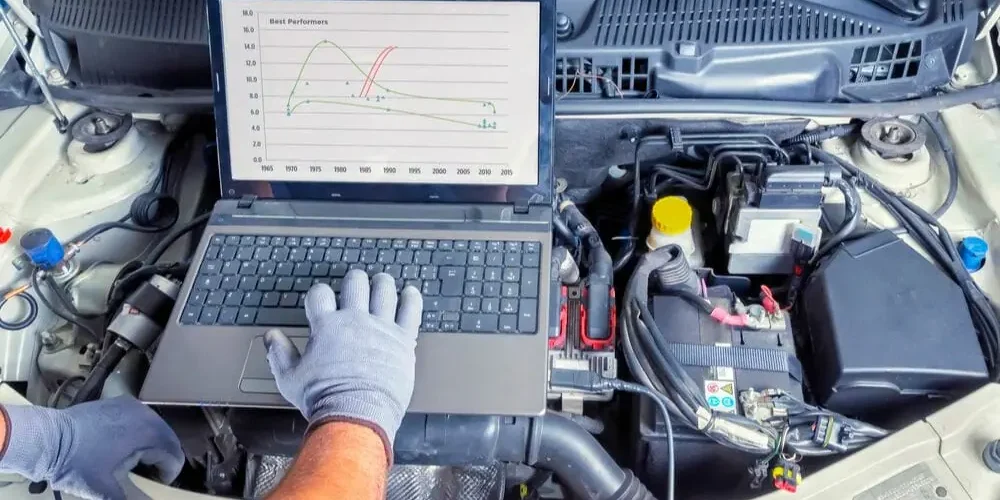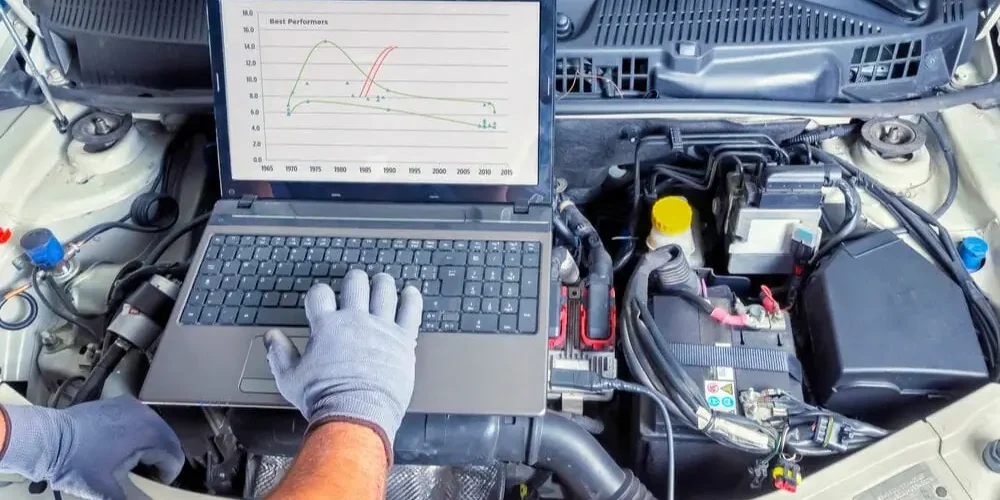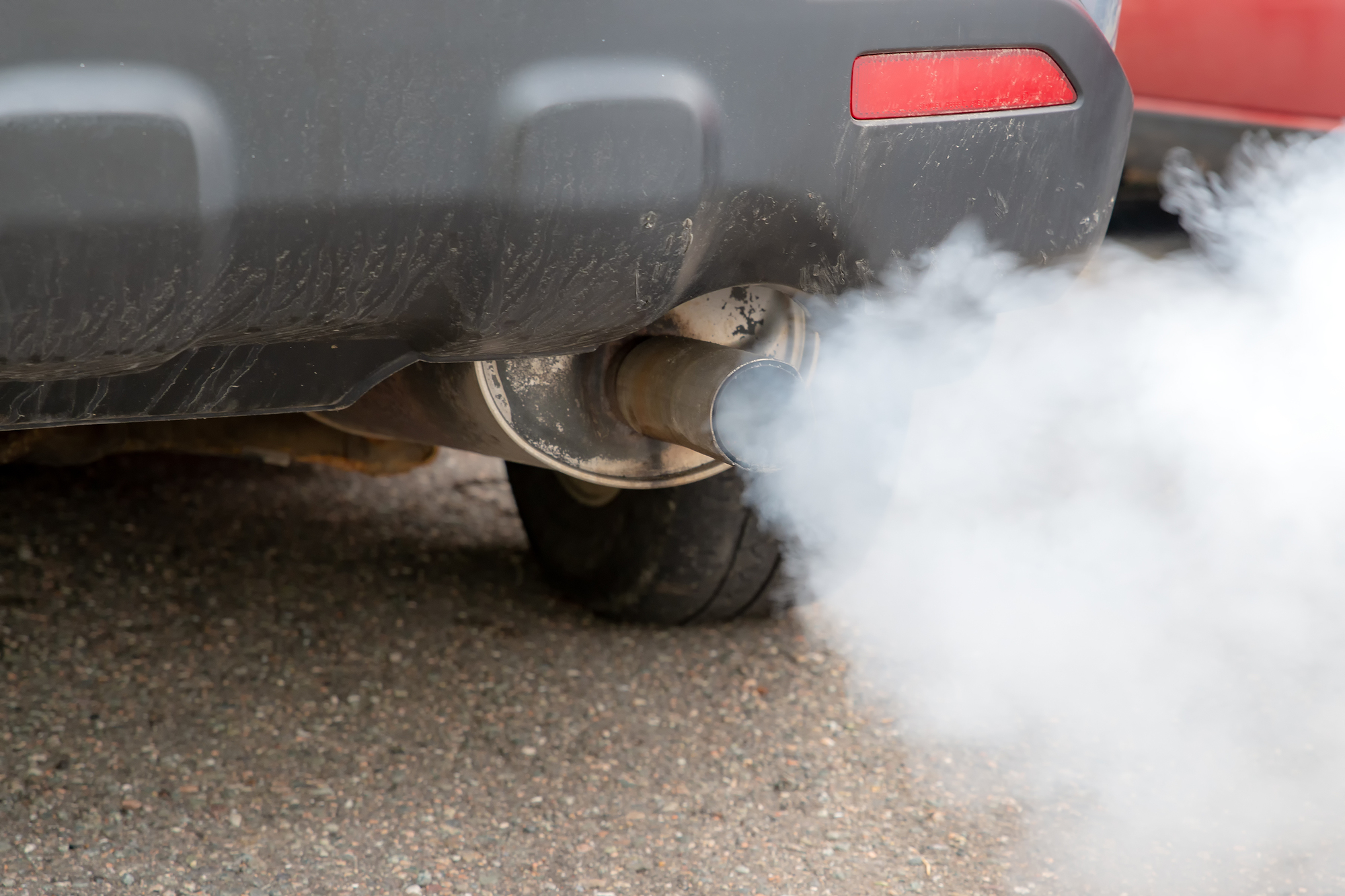How To Reset The Car ECU Without Disconnecting The Battery


Ways to Reset The Car ECU Without Disconnecting The Battery
To reset your car’s ECU without disconnecting the battery, you can try various methods. With the solution to the section “Ways to Reset the Car ECU Without Disconnecting the Battery,” you can avoid the hassle of disconnecting and reconnecting the battery. These methods include using an OBD2 scanner, using a fuse box, using the ignition, using a diagnostic tool, and seeking the help of a professional mechanic.
Using an OBD2 Scanner
An OBD2 scanner is an efficient tool to reset a car’s ECU. It connects to the vehicle’s diagnostic port and retrieves error codes that may have caused the ECU to malfunction. With an OBD2 scanner, resetting the ECU is easy and hassle-free.
To reset a car’s ECU using an OBD2 scanner, follow these 5 simple steps:
- Plug the OBD2 scanner into the car’s diagnostic port.
- Turn on the ignition, but don’t start the engine.
- Select ‘Diagnose’ from the menu on your OBD2 scanner.
- Select ‘Reset all Error Codes’.
- The ECU has been reset by your scanner successfully.
It’s crucial to make sure that your car is compatible with an OBD2 scanner before buying one. Reading reviews or consulting with a mechanic can help you determine if it would be beneficial for you.
Using an OBD2 scanner provides a more detailed report than disconnecting a battery and deals with present issues. The information provided by this device can also assist in diagnosing future problems, which could save money on repairs and maintenance down the road.
According to WebMD, driving gives the brain a workout when we are most at risk of memory decline, i.e., after middle age.
Get to know your car’s ins and outs with OBD2 scanners, the ultimate cheat code for DIY car repairs.
Understanding OBD2 Scanners
OBD2 Scanner Functions
An OBD2 scanner is an essential device that helps to reset a car’s ECU. It is equipped with advanced features capable of diagnosing and reading various car issues. The device connects to your car’s OBD-II system, retrieves data from it, and displays the results on the scanner’s screen.
- Diagnose problems: An OBD2 scanner can help identify engine problems through its diagnostic function.
- Reset ECU: An OBD2 scanner has a reset function that allows you to clear error codes and turn off warning lights after fixing the issue.
- Data Reading: An OBD2 scanner gathers real-time data from the car sensors and controls, which helps in monitoring performance metrics such as fuel efficiency, engine RPMs, and air pressure.
OBD2 scanners come in different sizes, shapes, functions, and price ranges. Before buying one for yourself, make sure you know what you need.
Pro Tip: When purchasing an OBD2 scanner, get one that is compatible with your particular vehicle’s make and model.
Using OBD2 Scanner to Reset ECU
An effective way to refresh your car’s electronic control unit is by using an OBD2 scanner. With this tool, you can diagnose and reset the internal systems in your vehicle.
To use an OBD2 scanner for resetting the ECU, follow these steps:
- Plug the diagnostic scanner into your car’s OBD2 port.
- Switch on the ignition and let the scanner boot up.
- Select “ECU” or “Engine Control Unit” from the menu.
- Please choose to reset or clear codes, wait for it to execute, and then turn off the ignition.
It’s important to note that using an OBD2 scanner might not always fully reset the ECU. Some settings may still remain due to various reasons, such as issues with sensors or malfunctioning of certain parts.
Resetting a car’s ECU with an OBD2 scanner is a beneficial technique often employed by automotive technicians for efficient diagnosis and repair.
A true fact shared by CarBibles.com mentions that faulty oxygen sensors account for almost 40% of engine issues in cars. Blow a fuse (in a good way) with this simple ECU reset method using your car’s fuse box.
Using a Fuse Box
Resetting a car’s ECU using a fuse box is an effective method that can help resolve issues without disconnecting the battery.
To use the fuse box method, follow these steps:
- Locate and examine your car owner’s manual to identify the fuse box location
- Using the fuse puller provided in your car’s fuse box kit, remove any relevant fuses connected to the ECU
- Leave them out for at least fifteen minutes before placing them back in their respective slots.
It’s important to note that removing irrelevant fuses could cause other issues in your car’s system. Therefore, carefully examine your owner’s manual before using this method.
A unique feature of this method is its ability to enable the resetting of specific electronic components that might affect or cause problems for the engine control module (ECM), thus saving time spent diagnosing complex issues with numerous electrical components.
Pro Tip: Before using this technique, ensure you’re familiar with your vehicle model and its fuse box layout to avoid complications.
Understanding the Fuse Box
The fuse box is an important part of a car’s electrical system. It is responsible for controlling the distribution of electricity throughout the vehicle and protecting it from short circuits and overloading. Understanding the function of the fuse box can help reset the car’s ECU without disconnecting the battery.
Here is a 4-step guide to understanding the fuse box:
- Locate the fuse box in your vehicle.
- Check the owner’s manual to identify which fuses are responsible for controlling the ECU.
- Remove and inspect those fuses carefully to see if they are blown or damaged.
- If any fuses are found to be defective, replace them with new ones of the same amperage.
It is important to note that not all vehicles have their ECUs controlled by fuses. Some cars may require alternative methods.
In history, early automobile manufacturers did not use fuse boxes in their cars’ electrical systems. Instead, circuit breakers were used, which were more prone to malfunctioning and leading to dangerous electrical fires in automobiles. The introduction of fuse boxes in modern-day vehicles has made them safer and more reliable by preventing dangerous electrical malfunctions from occuring.
Don’t be shocked if your car’s ECU feels like a light bulb that needs a new fuse-ectomy.
Removing and Reinstalling Fuses to Reset ECU
To reset the ECU without disconnecting the battery, another method is to remove and reinstall fuses related to the ECU. By doing this, you can clear all stored codes and return the system to its original state.
Follow these six simple steps to remove and reinstall fuses related to the ECU:
- Locate the fuse box: Refer to your vehicle’s manual or schematic for locating the fuse box.
- Identify ECU-related fuses: Consult your vehicle manual or labelling on the fuse box cover to identify fuses that are related to the ECU.
- Remove fuses: Carefully use a pair of pliers or a specialised fuse-pulling tool and gently pull out the identified fuses.
- Wait for 5 minutes: Allow at least 5 minutes for all power in the electrical system, including capacitors, to dissipate.
- Reinstall Fuses: Re-insert removed fuses back into their original position carefully using a specialised fuse installation tool or by hand
- Start engines: Turn on your car’s ignition and start engines. The ECU has now been reset successfully.
It is essential to note that some vehicles may have two or more fuse boxes; therefore, be sure all necessary fuses are identified before proceeding. Also, take good care when handling electrical components, as some may cause severe electrical shock or damage if mishandled.
Pro Tip: If you are still experiencing problems with your vehicle after resetting your ECU with this method, consider taking it for professional testing and diagnostics.
Using the Ignition
To Reset the Car’s Engine Control Unit (ECU) Without Disconnecting the Battery
One of the best ways to reset your car’s ECU without disconnecting the battery is by using the engine control module. By turning on your car with its key but not starting it and leaving it in that position for a few minutes, you can let the ECU recalibrate itself. This method works best if the lights still stay on even after diagnostic trouble codes have been cleared.
Apart from this method, you can also follow some other ways to reset the car’s ECU without disconnecting its battery. These methods include driving your car on a highway at high speed or performing specific drive cycles for various types of cars. Be sure to consult your user manual or search for manufacturer-approved online forums before attempting any other methods.
If you want to avoid damaging your vehicle’s internal systems, ensure that the chosen method is right for your car’s make and model. Remember that failing to reset an ECU after repairing a faulty component could cause issues such as poor fuel efficiency, warning lights to appear, and more expensive repairs over time.
Now that you know how essential resetting your car’s ECU is for optimal performance, don’t miss out on giving it a try. Choose one of these methods today and enjoy improved performance from your vehicle.
Turning the Key to Specific Positions to Reset ECU
One way to reset a car’s ECU is by turning the key to specific positions. This can help in fixing various issues with the vehicle, such as performance problems, check engine light errors, and more.
Here is a 4-step guide on how to turn the key to specific positions to reset the ECU:
- Insert the key into the ignition and turn it to the “ON” position without starting the engine.
- Pump the gas pedal fully down and release it three times within five seconds.
- Turn off the ignition after waiting for about 10–155 seconds.
- Start your vehicle normally.
It’s important to note that this process may vary depending on the make and model of your vehicle.
Resetting a car’s ECU through different methods can improve its performance without affecting its driving systems or breaking down parts.
Using a Diagnostic Tool
Diagnostic Devices to Reset Car’s ECU
Resetting a car’s engine control unit (ECU) is essential for optimal performance and longevity of the vehicle. One effective method to reset the ECU is by using a diagnostic tool.
Here’s a five-step guide on how to use diagnostic tools to reset the car’s ECU:
- Connect your diagnostic scanner to the OBD port of your car.
- Turn on the ignition key without starting your car engine, and switch on your scanner.
- Select “Read Codes” or “Trouble Codes” from the main menu of your scanner.
- Scan for codes until it clears all stored codes.
- Turn off the ignition key and unplug your scanner once it completes its cycle.
For an efficient outcome, ensure that you get a reputable diagnostic tool suitable for your car model.
Using diagnostic scanners is inexpensive, less time-consuming, and more reliable since it can provide better information than manual procedures. Some advanced diagnostic tools could also boost overall performance by reconfiguring settings in your car’s ECU. Such specialised functions offer an optimisation of powertrain efficiency and emissions, which could result in fuel savings and better environmental preservation.
In earlier years, resetting was only possible through manual procedures or professional mechanical experts at costly prices. The advancement in technology has allowed easier access while substituting traditional methods altogether.
Understanding Diagnostic Tools
Understanding the Functioning of Diagnostic Tools:
A vehicle’s electronic control unit (ECU) controls various engine functions. ‘Understanding Diagnostic Tools’ helps in resetting the ECU. The diagnostic tool links your car’s computer to your laptop or phone for a more comprehensive diagnosis of vehicle problems.
| S.No | Diagnostic Tool | Description |
|---|---|---|
| 1 | OBD-II Scanner | It plugs into the car and gives access to retrieved data for troubleshooting faults, resetting error codes, and monitoring sensor readings. |
| 2 | Digital Multimeter | This tool analyses voltage, current, and resistance levels and can identify problems within electrical systems. |
| 3 | Oscilloscope | It analyses signals like waveforms, frequency, and amplitude by using a graph that represents them. |
Using the diagnostic tools mentioned above can help reset the ECU without disconnecting the battery. They detect errors and provide you with insight into where they occur. In addition to these tools, there are many others available on the market.
Once I was driving my friend’s car when it suddenly stopped running at a traffic signal. With no prior knowledge about the ECU or any diagnostic tools in hand, it was difficult to diagnose what went wrong with the car. Fortunately enough, an acquaintance showed us how an OBD-II scanner helped him understand why his car wouldn’t start previously. As we used the scanner to diagnose our problem at that moment, however strange it may sound, we were able to restart the vehicle as if nothing ever happened! Who needs a mechanic when you can diagnose and reset your ECU yourself? It’s DIY car repair made easy!
Using Diagnostic Tools to Reset ECU
Using OBD-II Scanners to Reset Car Engine Control Unit
Resetting the ECU with diagnostic tools involves accessing the OBD-II port of your car. This can be done by connecting a diagnostic tool to it. OBD-II scanners are available in different types, ranging from simple code readers to advanced diagnostic tools. The process is simple, quick, and safe as compared to conventional methods of disconnecting the battery terminals.
Here’s a 4-step guide on how to use OBD-II tools to reset the ECU:
- Locate the OBD-II port: Find the location of the OBD-II port in your car and connect the scanner tool.
- Plug-in and Turn-on: Plug in the OBDII tool into the port and turn on your car’s ignition, but do not start the engine.
- Select Reset Option: Choose the Reset or Erase command from the given options for resetting ECU memory from your diagnostics tool.
- Wait until Complete: Wait patiently for some time until it completes; then you’re done!
By using an OBD-II scanner, you can not only reset your ECU but also diagnose your vehicle’s problems.
It’s recommended that you use a code reader or scanner designed explicitly for resetting ECUs to avoid any risks when resetting other vital vehicle functions.
Resetting your ECU may resolve issues related to fuel efficiency or power loss that have persisted even after fixing mechanical components such as spark plugs or sensors.
Lastly, always ensure that you read all instructions carefully before using any diagnostic tool, making sure that you have selected the correct option before commencing with any procedure.
Using a Professional Mechanic
Taking your car to a certified professional mechanic is one of the most reliable ways to reset the Engine Control Unit (ECU). The mechanic will perform a series of diagnostic checks before reprogramming the ECU to its factory settings. This option is ideal for individuals who lack technical knowledge of car maintenance and may cause further damage if they try to reset the ECU themselves.
A competent mechanic will use their vast knowledge of automobile engineering to assess various components, such as ignition timing, fuel injection, and idle speed control systems. After that, they will inspect fault codes stored in the system’s memory before using specialised software and diagnostic tools to reset the ECU’s settings.
One advantage of using a professional mechanic is that they can offer additional services such as car battery testing, lubrication service, or tyre rotation. Such services ensure that all other crucial parts of your vehicle are working correctly. Additionally, mechanics can identify underlying problems with your engine or other critical systems during routine maintenance checks.
Working with an experienced and trustworthy mechanic is essential for ensuring quality workmanship and avoiding fraudulent activities. Before choosing a technician, always check their credentials, years of experience, customer reviews, and certifications from recognised automotive institutions.
Finding a Professional Mechanic
Car owners may need the services of a professional mechanic to reset their car’s ECU and get their vehicle running smoothly. Here are some tips on finding a qualified mechanic to do this job for you.
- Check for certified mechanics with plenty of experience in performing ECU resets.
- Ask friends, family members, or co-workers who they trust with their cars so you can find a reliable mechanic.
- Look for online reviews of local repair shops and read feedback from previous customers to determine whether the mechanic is qualified and trustworthy.
- Contact your car dealer or manufacturer’s customer service department to ask for information on authorised mechanics in your area.
- Determine whether you want to work with an independent mechanic or visit a dealership that specialises in your make and model of car.
- Compare prices and read through reviews before choosing a mechanic and getting started with an ECU reset.
It’s important to note that not all mechanics are created equal, so it’s essential to do some research before selecting one. Make sure that the person you choose is properly licenced, has positive reviews, and has experience working with vehicles similar to yours.
Story:
One car owner had trouble starting their vehicle after changing out a faulty part. They decided to take it to a local repair shop rather than disconnecting the battery like they normally would to reset the ECU themselves. The mechanic was able to quickly diagnose the issue and perform an ECU reset, getting them back on the road without any further problems.
Having the ECU Reset by a Professional Mechanic
Having a professional mechanic reset your car’s ECU can be an effective way to fix any issues you may be experiencing with your vehicle. This process involves accessing the car’s onboard computer system and clearing any stored codes that may be causing problems. It is important to find a qualified and experienced mechanic who knows how to perform this procedure correctly.
Here is a simple 5-step guide for having your ECU reset by a professional mechanic:
- Research and choose a trusted mechanic or service centre with experience in ECU resets.
- Make an appointment at the facility and bring your vehicle in for servicing.
- Upon arrival, communicate the issues you have been experiencing with your vehicle to the mechanic.
- The mechanic will then use specialised equipment to access your car’s onboard computer system and clear any codes present.
- Your vehicle will be tested to ensure that the issue has been resolved before it is returned to you.
It is worth noting that having your ECU reset by a professional mechanic can sometimes be more expensive than other methods. However, it is often the most reliable way to ensure that any underlying issues are identified and addressed effectively.
In addition to using this method, there are other steps you can take to keep your car running smoothly. Regular maintenance like oil changes, tyre rotations, and tune-ups can help prevent issues from developing in the first place. It is also important to drive responsibly and avoid hard driving or sudden stops, as these can put unnecessary stress on your vehicle’s components.
If you are unsure which option is best for resetting your car’s ECU, speak with a trusted professional who can provide guidance specific to your situation. Don’t let unresolved issues go unaddressed; taking action now could save you time and money down the road.
How To Reset Car ECU Without Disconnecting Battery – Frequently Asked Questions
1. Why would I need to reset my car’s ECU?
Answer: Resetting your car’s ECU can help improve its performance or fix certain issues, such as a rough idle or poor fuel efficiency.
2. Is it safe to reset the ECU without disconnecting the battery?
Answer: Yes, as long as you follow the proper procedure, resetting the ECU without disconnecting the battery is safe and will not damage your car.
3. How do I reset the ECU without disconnecting the battery?
Answer: To reset the ECU without disconnecting the battery, simply turn the key to the “on” position and press the accelerator pedal down three times within five seconds.
4. Will resetting the ECU delete my car’s settings and preferences?
Answer: No, resetting the ECU will not delete any of your car’s settings or preferences.
5. How often should I reset my car’s ECU?
Answer: There is no set time interval for when you should reset your car’s ECU. It should only be done if an issue needs to be addressed or if you would like to improve performance.
6. Are there any risks involved with resetting the ECU?
Answer: Resetting the ECU is generally safe and will not cause any harm to your car. However, if done improperly, it could lead to issues such as a loss of power or engine misfiring.










